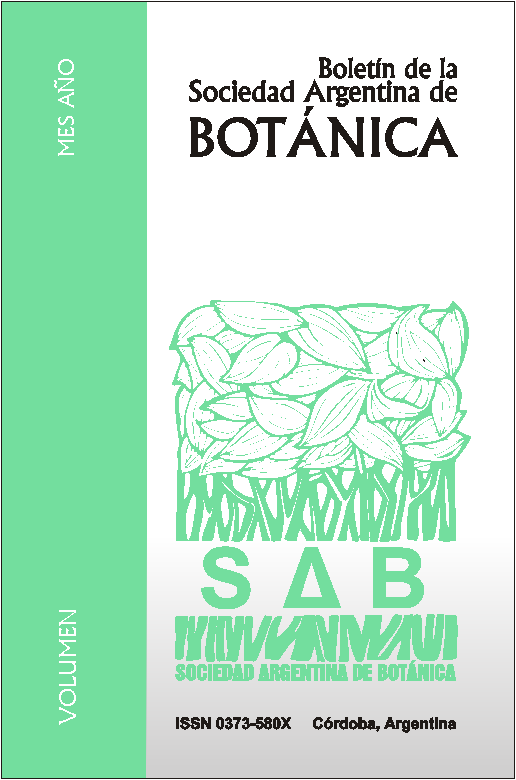Pre- dispersal seed loss of Ramorinoa girolae (Fabaceae) in Ischigualasto Provincial Park (San Juan, Argentina
DOI:
https://doi.org/10.31055/1851.2372.v50.n4.12917Palavras-chave:
Anypsipyla univitella, fruit production, fruit size, seed abortion, seeds per fruit, seed viability.Resumo
Ramorinoa girolae Speg. is a “vulnerable” tree endemic to Argentina. During the pre-dispersal stage, the seeds are predated by Anypsipyla univitella. The objectives of this study were to describe some reproductive parameters (size and number of fruits and seeds) of R. girolae, to quantify pre-dispersal seed loss by abortion and predation, and to test the effect on pre-dispersal seed predation of fruit production (per tree, of co-specific neighbors, and the sum of both), size of fruits, number of seeds per fruit, and number of predators per fruit. As seeds can be partially consumed by the predator, the viability of partially damaged seeds was assessed as well. At Ischigualasto Park, we sampled 17 adult trees from 3 stands spaced 4 km apart. For each focal tree, we quantified the number of co-specific neighbors and their fruits. We collected ten fruits from canopies and recorded their length and the number and states of seeds (intact, predated, and aborted). Generalized Linear Mixed Models were fitted to evaluate explanatory variables affecting the proportion of pre-dispersal predated seeds. R. girolae suffers great loss of seeds during the pre-dispersal stage, mainly by seed predation (58% of seeds). The proportion of predated seeds was most important relative to the number of predators, the number of seeds per fruit, and the size of fruits. Fruits containing more predators, more seeds, and smaller fruits had higher proportions of predated seeds. Seed abortion would not represent an important factor of seed loss (6% of seedsDownloads
Publicado
Edição
Seção
Licença
Proporciona ACESSO ABERTO imediato e livre ao seu conteúdo sob o princípio de tornar a pesquisa livremente disponível ao público, o que promove uma maior troca de conhecimento global, permitindo que os autores mantenham seus direitos autorais sem restrições. 
Material publicado em Bol. Soc. Argent. Bot. é distribuído sob uma licença Creative Commons Attribution-NonCommercial-ShareAlike 4.0 International License. 





